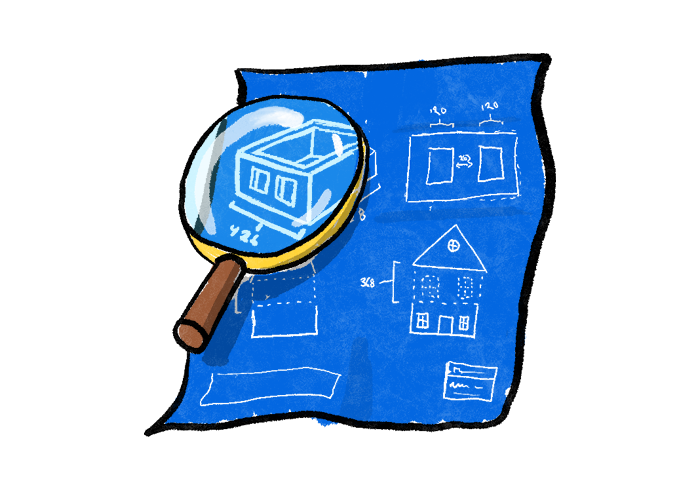Housing plans

Reykjavík’s Housing Plans address housing market challenges and Reykjavík City housing goals. They are based on Reykjavík City housing policies, legal frameworks, and housing market analyses.
Housing plans
- Reykjavík's Housing Plan 2025-2034 - approved by the City Executive Council on May 15, 2025
- Reykjavík Housing Plan 2024-2033 - first approved by City Council on December 21, 2023 and again in an improved version on March 21, 2024
- Equality impact screenting of Reykjavík's Housing Plan 2024-2033 - dated December 15, 2024 and submitted to the City Council with the Housing Plan on December 21, 2023
- Reykjavík's Housing Plan 2024-2033 at HMS - approved by the City Council on March 21, 2024
Previous versions of the City's Housing Plans:
- Reykjavík Housing Plan - presented to City Council on November 10, 2022
- Reykjavík Housing Plan - presented to City Council on October 28, 2021
- Reykjavík City Housing Plan presented to City Council on November 14, 2019
- Reykjavík City Housing Plan presented to City Council on November 15, 2018
- Reykjavík City Housing Plan presented to City Council on March 08, 2018
- Housing proposals approved at City Council meeting on July 31, 2018
- Reykjavík City Housing Plan presented to City Council on October 12, 2017
- Reykjavík City Housing Plan approved by City Council on June 6, 2017, along with housing proposals.
Policy making
Reykjavík's policy making in housing matters can be found in approved policy documents and approvals by the City Council and City Executive Council.
Key policy documents concerning housing issues include Reykjavík's Housing Policy, the City Council Majority Coalition Agreement 2018-2022, Reykjavík's Municipal Plan 2010-2030, and Reykjavík City's Contractual Goals in new development areas.

Reykjavík's policy making in housing matters can also be found in the following:
- The Green Deal addresses economically, socially, and environmentally sustainable Reykjavík City concerning housing development, densification, and increased sustainability of residential areas.
- Suggestions for a new appendix to the Municipal Plan were presented to the Planning & Transportation Council and City Executive Council in October 2020, involving a reassessment of the policy regarding residential and mixed development and extending the planning period until 2040.
- The CityLine project is a key part of the newly approved transportation agreement between capital area municipalities and the state. It plans major transportation improvements to better connect the capital area over the next 15 years.
- City Council Majority Coalition Agreement of Reykjavík City Council for 2018-2022 covers, among other things, initiatives in housing.
Main housing policy focuses
The City's housing policy has four main focuses:
-
Housing for everyone
-
Increase in rental and cooperative apartments
-
Robust and sustainable neighborhoods
-
Good land use and densification along development axes
Increase in rental and cooperative apartments
More rental and cooperative dwellings owned by housing cooperatives, associations, and/or private parties, especially in central areas easily served by public transportation.
The aim will be that about 25% of new dwellings will be by non-profit housing associations.
2,500-3,000 new rental and cooperative dwellings will be built in the coming years in cooperation with rental and cooperative associations.
Félagsbústaðir Social Housing will be a cornerstone in new development projects.
Housing for everyone
Housing supply will meet the needs of the time, with an increased offering of smaller dwellings in the coming years, regardless of ownership form.
A diverse range of housing types and living options for all social groups, ensuring any housing resource can be integrated within residential areas, centrally where residential housing is expected or in other mixed-use areas.
Reykjavík City's housing support will be tailored to the individual circumstances of residents.
Special attention will be given to the housing needs of youth and those entering the housing market for the first time, as well as those unwilling or unable to invest heavily in their own housing.
The goal is to create conditions for the development of at least 1,000 new dwellings per year on average. Of these, it is expected that about 250 dwellings will be built by non-profit housing associations.
Robust and sustainable neighborhoods
Development of housing suitable for lower-income groups will mainly be in areas easily served by quality public transportation and/or near major employment centers and diverse services.
Strong community entities will be created, supporting basic services, varied shopping and services, sports and recreational activities, and diverse daily life.
Always consider the context of housing costs and transportation expenses when forming housing policies and creating housing plans.
Sustainable and environmentally friendly design solutions will always guide the development of new residential areas.
Good land use and densification along development axes
Land and the city's infrastructure will be utilized efficiently, and the capital cost of infrastructure for development areas will be funded by the proceeds from the development.
Urban densification - 90% of all new dwellings in Reykjavík by 2030 will be within the current urban boundaries. Three areas will play a key role in Reykjavík's development over the next decades; Vatnsmýri, Elliðaárvogur, and the city center/Old Harbor.
Urban densification and new dwellings will be along development axes that connect the city center, including with CityLine, to densification areas to the east and south, taking into account the expected development in Vatnsmýri and municipalities in the capital area.
What do you want to explore next?
- Mayor's streamed meetings Yearly public meetings about residential property development.
- Affordable housing Projects focusing on young people and first-time buyers
- Housing for everyone Reykjavík City works with non-profit organizations
- Green housing Development guided by sustainability and green values
- Housing construction Map view of apartment development in Reykjavík
- Green housing Sustainable development in housing development
- Capital grants Reykjavík City provides endowment capital for purchasing or constructing rental apartments.
- Economic and Urban Development Sign up for the mailing list
Further information
Would you like further information or to contact us?
Send an email to athafnaborgin@reykjavik.is